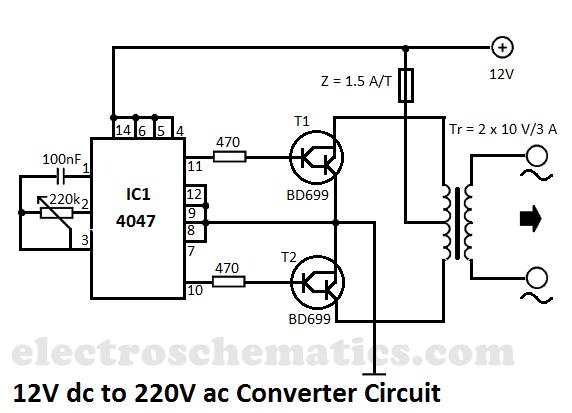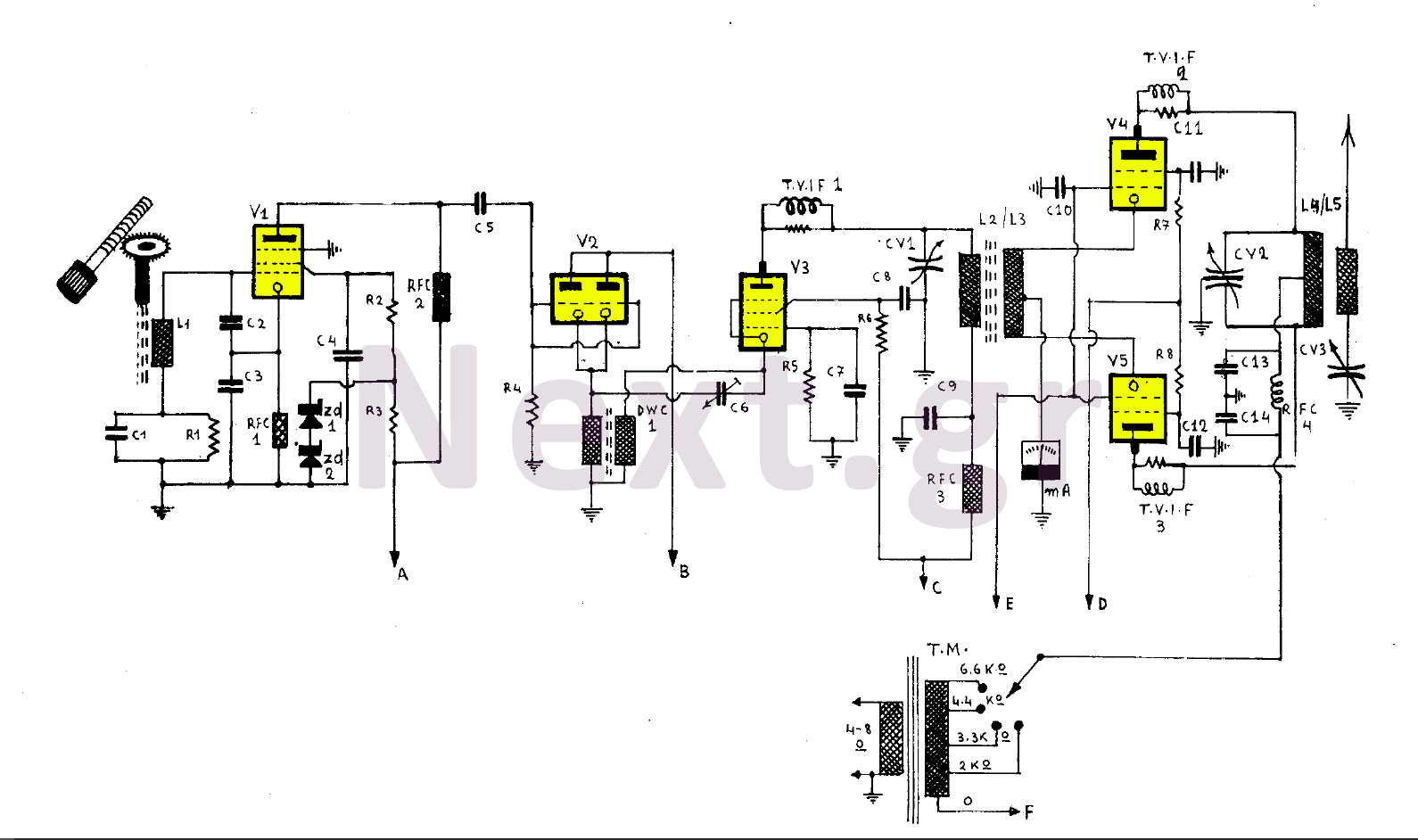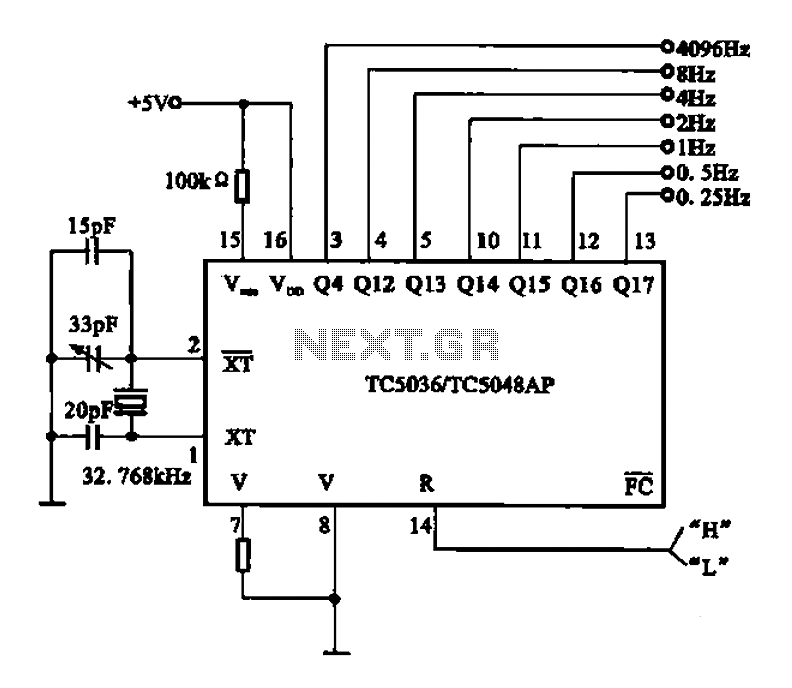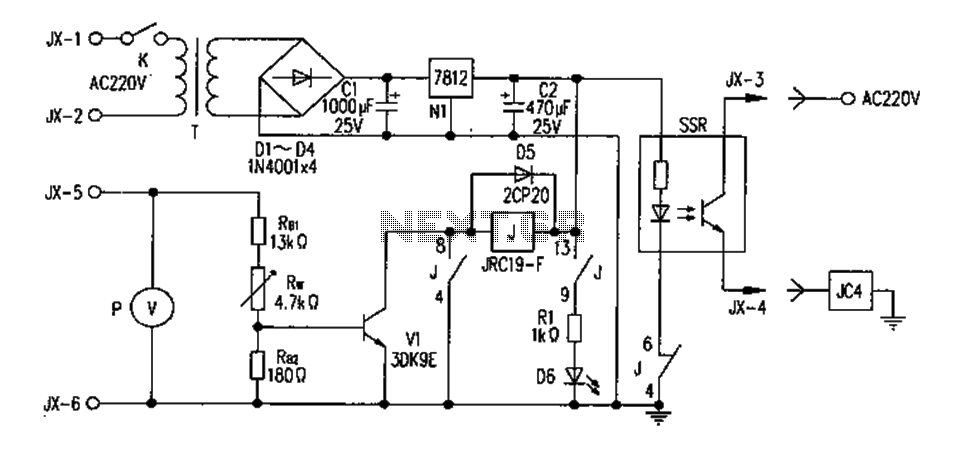
Humidity detector circuit

Humidity detector circuit electronic project using common electronic parts
The humidity detector circuit is a project designed to measure and indicate the level of humidity in the environment. This circuit utilizes commonly available electronic components, making it accessible for hobbyists and engineers alike. The fundamental operation of the circuit is based on a humidity sensor, which detects changes in humidity levels and converts these changes into an electrical signal.
The primary component of this circuit is a humidity sensor, such as the DHT11 or DHT22, which provides both humidity and temperature readings. The sensor typically outputs a digital signal that can be read by a microcontroller or microprocessor, such as an Arduino or Raspberry Pi, which processes the data accordingly.
Additional components in the circuit may include resistors, capacitors, and a power supply, which are used to stabilize the sensor's output and ensure reliable readings. An LED indicator can be incorporated to visually represent humidity levels, with different colors or blinking patterns indicating various humidity ranges.
For further enhancement, a display module, such as an LCD or OLED, can be integrated to provide a real-time readout of the humidity levels. This allows for easy monitoring and interpretation of the data. The circuit can also be designed to trigger alarms or notifications when humidity levels exceed predefined thresholds, making it suitable for applications in agriculture, HVAC systems, and environmental monitoring.
Overall, this humidity detector circuit serves as a practical example of how simple electronic components can be utilized to create effective measurement tools in various applications.Humidity detector circuit electronic project using common electronic parts 🔗 External reference
The humidity detector circuit is a project designed to measure and indicate the level of humidity in the environment. This circuit utilizes commonly available electronic components, making it accessible for hobbyists and engineers alike. The fundamental operation of the circuit is based on a humidity sensor, which detects changes in humidity levels and converts these changes into an electrical signal.
The primary component of this circuit is a humidity sensor, such as the DHT11 or DHT22, which provides both humidity and temperature readings. The sensor typically outputs a digital signal that can be read by a microcontroller or microprocessor, such as an Arduino or Raspberry Pi, which processes the data accordingly.
Additional components in the circuit may include resistors, capacitors, and a power supply, which are used to stabilize the sensor's output and ensure reliable readings. An LED indicator can be incorporated to visually represent humidity levels, with different colors or blinking patterns indicating various humidity ranges.
For further enhancement, a display module, such as an LCD or OLED, can be integrated to provide a real-time readout of the humidity levels. This allows for easy monitoring and interpretation of the data. The circuit can also be designed to trigger alarms or notifications when humidity levels exceed predefined thresholds, making it suitable for applications in agriculture, HVAC systems, and environmental monitoring.
Overall, this humidity detector circuit serves as a practical example of how simple electronic components can be utilized to create effective measurement tools in various applications.Humidity detector circuit electronic project using common electronic parts 🔗 External reference





